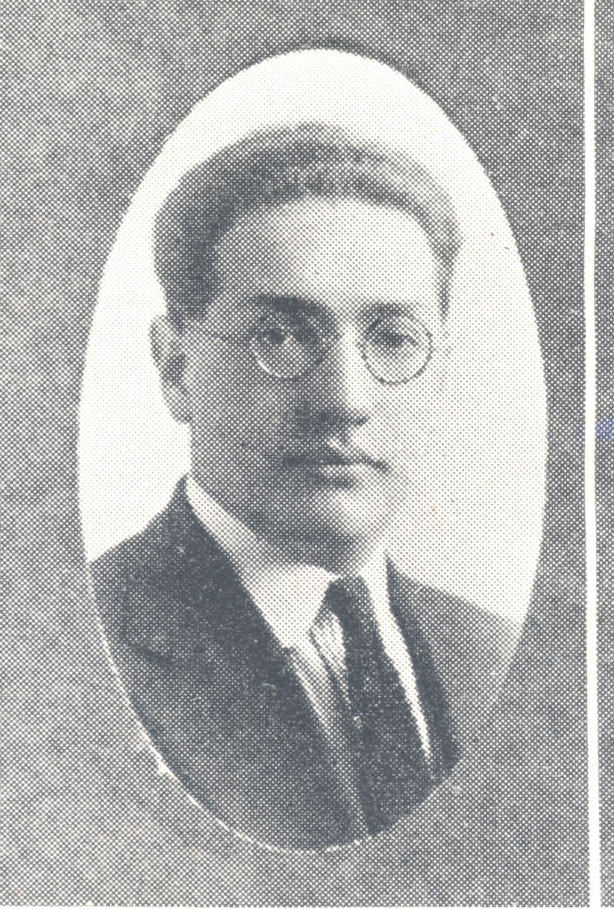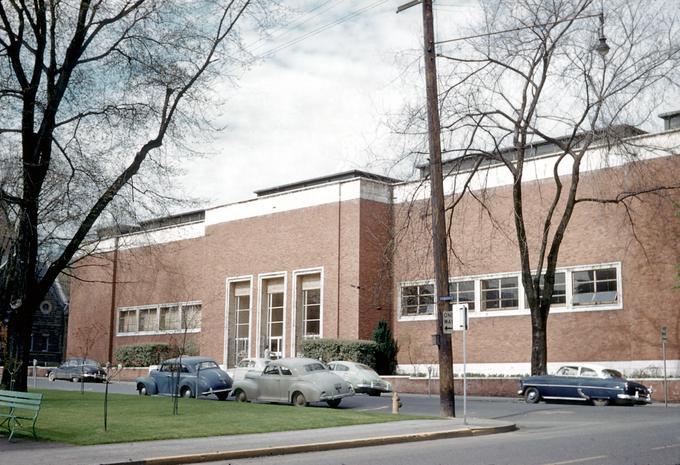In 1933, at the height of the Great Depression, Mark Rothko and his wife Edith Sachar hitchhiked across the United States from New York City so that he could introduce her to his family in Portland. During their stay, the couple camped in a tent in Washington Park, and Mark Rothko composed hundreds of landscape views of the city and the rolling vistas that surround it. That summer, the Portland Museum of Art granted Rothko his first solo exhibition, which featured watercolors and tempera sketches executed during his sojourn in the city, along with examples of paintings by his art students in Brooklyn, New York.
Nearly eighty years later, in the spring of 2012, the Portland Art Museum (PAM) again celebrated Rothko’s work—which had achieved international acclaim—by staging its first retrospective of his paintings. Although many of the physical traces of Rothko’s youth in Portland have disappeared, such as the houses he lived in during his teenage years and the businesses his family owned, his ties to Portland were revived by the PAM exhibit.
Arguably the most renowned visual artist to emerge from Oregon in the twentieth century, Rothko was both appreciative of the state’s natural beauty and wary of the difficult memories that the City of Portland harbored for him. Later in his life, however, he reflected that he had spent his “youth in front of the endless space of the landscape of Oregon lying covered by wintery snows, in front of the monumental emptiness that is nothingness and at the same time part of it ‘all.’”
Marcus Rothkowitz was born on September 25, 1903, in Dvinsk, Russia (now Latvia), the fourth child of Jacob Rothkowitz, a pharmacist, and Anna (Kate) Goldin. By the time Rothko was seven, several factors convinced the family to move to the United States. For Rothko's father, the growing threat of antisemitic oppression under the czarist regime, Cossack violence, and the potential that his two oldest sons would be drafted into the military were reason enough to leave.
In 1910, Jacob Rothkowitz arrived alone in Portland, where his brother Samuel Weinstein owned a successful wholesale clothing business, N & S Weinstein. Jacob’s two eldest sons, Moise and Albert, made a dangerous journey to Ellis Island without passports, arriving in January 1913. A few months later, Marcus, his older sister Sonia, and their mother sailed second class on the SS Czar to Brooklyn. By September 1913, the family had been reunited and had moved into a house built by Samuel Weinstein in southwest Portland on 834 Front Street.
Rothko was almost ten years old when he arrived in the United States, but he soon spoke English well enough that he could join students his age at Failing Elementary School. He contributed to his family’s income by selling newspapers and helping his father with his business, the Old World Drug Store and Ice Creamery.
In March 1914, just seven months after the family was reunited, Rothko’s father died from colon cancer. The family was forced into economic dependence on Samuel Weinstein, prompting Rothko and his siblings to seek employment. The family moved to a new residence in Portland, and Rothko attended Shattuck Grade School. He was a successful student with interests in literature, music, creative writing, and drama. As a teenager, he enrolled in his first art classes at the Museum Art School. He graduated from Lincoln High School with honors and was awarded a scholarship to Yale University in 1921.
Although members of Rothko’s family remained in Portland throughout his life, he returned to Oregon only for short periods after leaving for college. He left Yale without completing his degree and moved to New York City, where he was employed between 1929 and 1952 as a children’s art teacher at the Center Academy. He later taught at Brooklyn College and the California School of Fine Art. In 1940, in response to a rise in antisemitism in the United States as well as marked shifts in his own artistic identity, he changed his name from Marcus Rothkowitz to Mark Rothko. In 1944, Rothko divorced Edith Sachar; he married Mary Alice “Mell” Beistle in 1945; they had two children.
Rothko became a leading contributor to the Abstract Expressionist movement, based in New York City, creating notable multiform paintings such as No.3/ No. 13, 1949 (Museum of Modern Art, New York), Untitled, 1949 (National Gallery of Art, Washington, D.C.), and Untitled (Violet, Black, Orange, Yellow on White and Red), 1949 (Solomon R. Guggenheim Museum, New York City). During the 1950s and 1960s, he received major commissions from Joseph Seagram and Sons, the Phillips Collection, and the Menil Collection. He is considered one of the most important American artists of the twentieth century, and his monumental paintings are represented in museum collections throughout the world.
After suffering health problems and separation from his second wife, the sixty-six-year-old Rothko committed suicide in his studio in New York City. He is buried in Long Island, New York.
-
![Mark Rothko (Rothkowitz), Lincoln High School]()
Mark Rothko (Rothkowitz), Lincoln High School.
Mark Rothko (Rothkowitz), Lincoln High School Courtesy Oreg. Hist. Soc. Research Lib., OrHi85227
Related Entries
Map This on the Oregon History WayFinder
The Oregon History Wayfinder is an interactive map that identifies significant places, people, and events in Oregon history.
Further Reading
Baal-Teshuva, Jacob. Mark Rothko, 1903-1970: Pictures as Drama. Hong Kong: Taschen, 2009.
Breslin, James E. B. Mark Rothko: A Biography. Chicago: University of Chicago Press, 1993.
Rothko, Mark, and Diane Waldman. Mark Rothko, 1903-1970: A Retrospective. New York: H.N. Abrams, 1978.
Weiss, Jeffrey S, and John Gage. Mark Rothko. Washington: National Gallery of Art, 1998.


